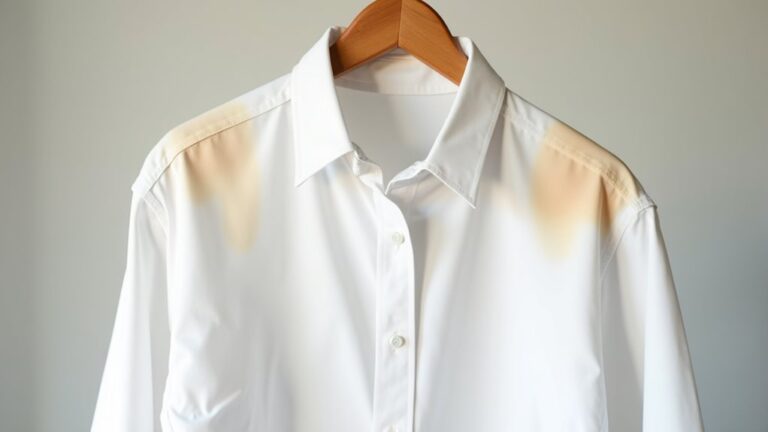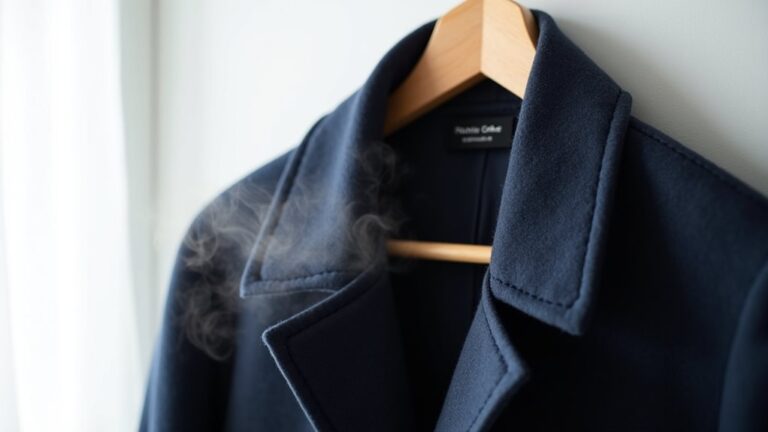Dry cleaning can absolutely remove many old stains that seem permanently set, though success isn’t guaranteed for every stubborn mark. Professional solvents penetrate deeper than home washing, breaking down molecular bonds in oil-based stains, wine spills, and protein marks from sweat or blood. The stain’s age, type, and fabric matter considerably—heat-treated stains from previous washing attempts are trickier to tackle. Understanding what to expect can greatly improve your chances of success.
How Dry Cleaning Works on Set-In Stains
When you’re staring at that stubborn wine stain on your favorite silk blouse from last month’s dinner party, you might wonder if dry cleaning can work its magic on something that’s already set its roots deep into the fabric.
Here’s the beautiful truth: professional dry cleaners use specialized solvents that actually penetrate those fabric fibers where your old stains are hiding, breaking down molecular bonds that regular washing can’t touch.
These powerful enzyme solutions target protein-based set-in stains with surgical precision, making removal effectiveness considerably higher than your home attempts.
While immediate treatment is always ideal, dry cleaning can still tackle stains that have been camping out for weeks or months, though complete stain removal isn’t guaranteed for every stubborn mark.
The chemical solvents used in dry cleaning are particularly effective because they don’t rely on water, making them superior for treating oil-based and grease stains that have bonded with delicate fabric fibers over time.
Factors That Affect Old Stain Removal Success
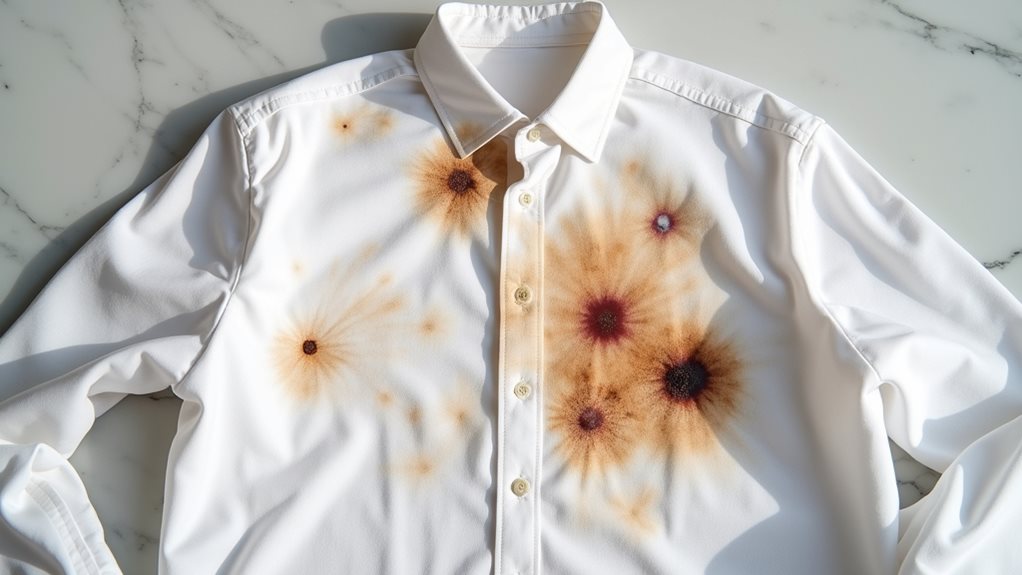
Although that wine stain might look identical to your friend’s similar mishap, several crucial factors determine whether your dry cleaner will become your hero or leave you disappointed.
Your stain removal success depends on multiple variables that’ll make or break the cleaning process.
Here’s what really matters:
- Age and duration of exposure – Old stains bond deeper into fabric fibers, making them stubborn little troublemakers that resist even the best professional dry cleaner’s efforts.
- Type of stain and fabric type – Oil-based stains like makeup respond differently than protein stains, while delicate fabrics require gentler approaches than sturdy cotton.
- Solvents used and cleaning process – Not every cleaner uses advanced techniques; some still rely on basic methods that won’t tackle your toughest challenges.
The success rate also depends on whether heat-treated stains have been set into the fabric through previous attempts at removal or exposure to high temperatures.
Understanding these factors helps set realistic expectations!
Types of Old Stains Most Likely to Come Out
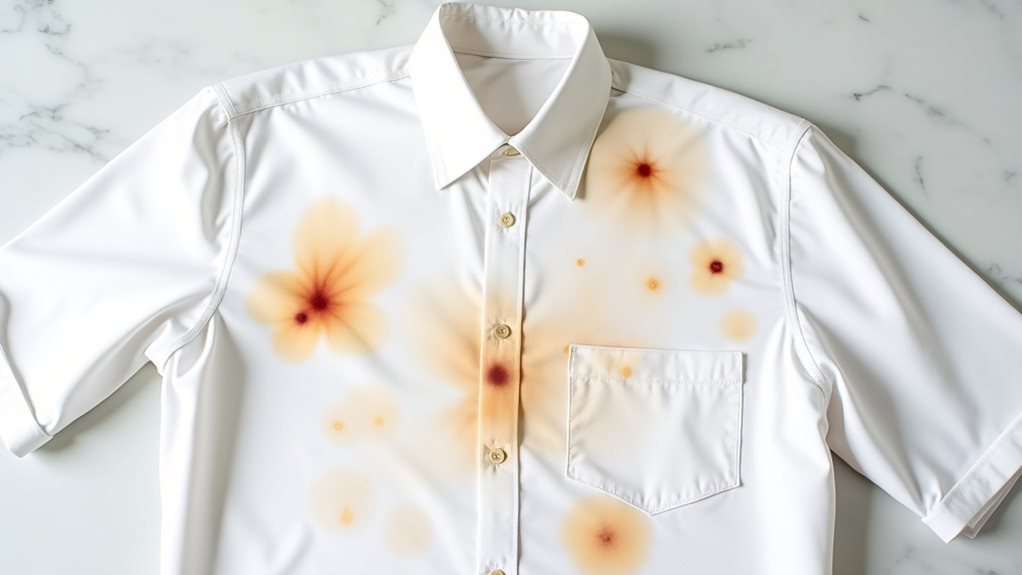
While some stains seem destined to become permanent fabric tattoos, certain types actually surrender quite gracefully to professional dry cleaning, even after they’ve had months or years to settle into their cozy fabric homes.
Old oil-based stains, particularly those stubborn cooking grease marks, respond beautifully to specialized solvents that dissolve lipids without compromising fabric integrity. The success of oil stain removal depends significantly on factors like fabric material and whether heat-set stains have occurred from previous washing attempts.
Tannin stains from your favorite red wine mishaps or coffee disasters can be neutralized effectively, even when they’ve been plotting against your clothes for ages.
Protein stains from sweat or blood break down under enzyme treatments, while dye stains from ink accidents often lift completely.
Combination stains—those complex messes involving multiple culprits—also surrender to professional expertise that can effectively remove even the most challenging marks.
When Professional Treatment Is Your Best Option
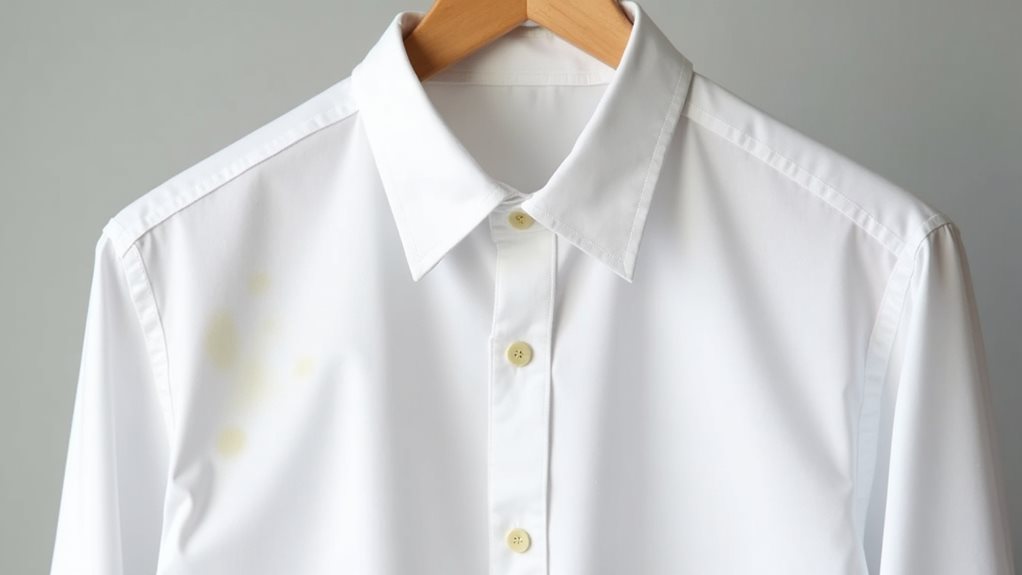
Even after watching countless home remedy videos on YouTube and armed with the confidence of someone who once successfully removed a ketchup stain, you’ll eventually encounter that one stubborn mark that laughs in the face of your DIY efforts—and that’s precisely when it’s time to wave the white flag and call in the cavalry.
Professional dry cleaning becomes your best option when:
- Your old stains have bonded with fabric fibers over months or years
- Specialized solvents are needed to penetrate deeper than home remedies can reach
- You’re dealing with delicate fabrics requiring advanced techniques
Don’t let pride keep you from seeking effective treatment—delaying professional help often leads to permanent discoloration.
The success rate of expert dry cleaners far exceeds DIY methods for stubborn stains.
Professional dry cleaners use chemical solvents like perchloroethylene that can dissolve grease and grime that water-based home treatments simply cannot tackle effectively.
What to Expect When Bringing Old Stains to Dry Cleaners
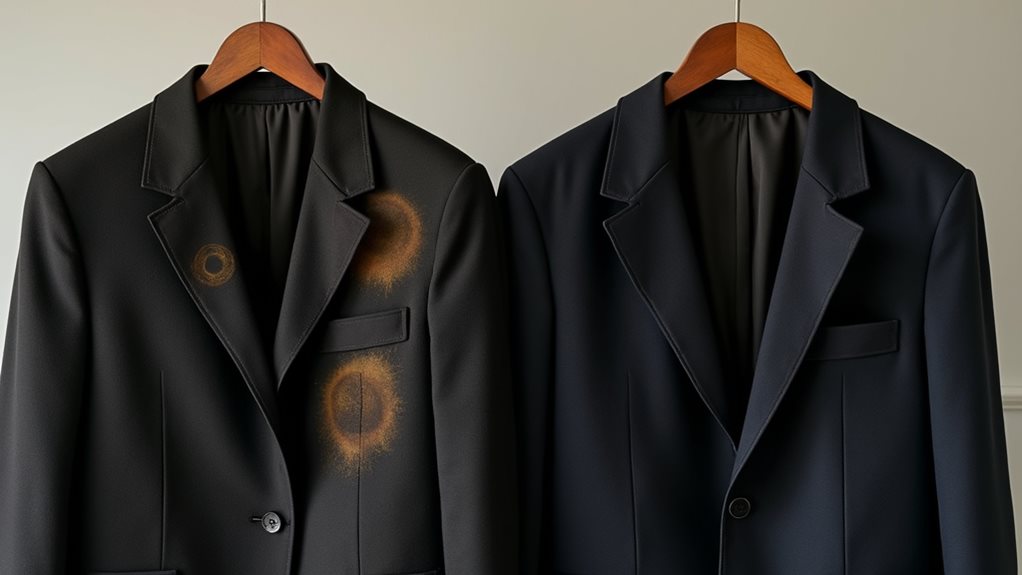
When you walk into that dry cleaner with your stained garment clutched hopefully in your hands, the first thing you’ll notice is how the experienced staff examines your item with the focused intensity of a detective at a crime scene.
Professional dry cleaners examine your stained garments with the focused intensity of detectives investigating a crime scene.
Professional dry cleaners will ask detailed questions about your stain history – what caused it, when it happened, and what cleaning attempts you’ve already made.
They’re not being nosy; they’re strategizing which solvents and cleaning techniques will work best for your specific types of stains, especially those stubborn old stains that have set in over months or years.
Be honest about everything, even that embarrassing wine spill from last Christmas 🍷, because transparency directly impacts the success of removal, particularly with delicate fabrics requiring specialized care.
The dry cleaner will likely apply spotting agents to pre-treat your old stains before beginning the main cleaning process, as this targeted approach significantly improves the chances of successful removal.


